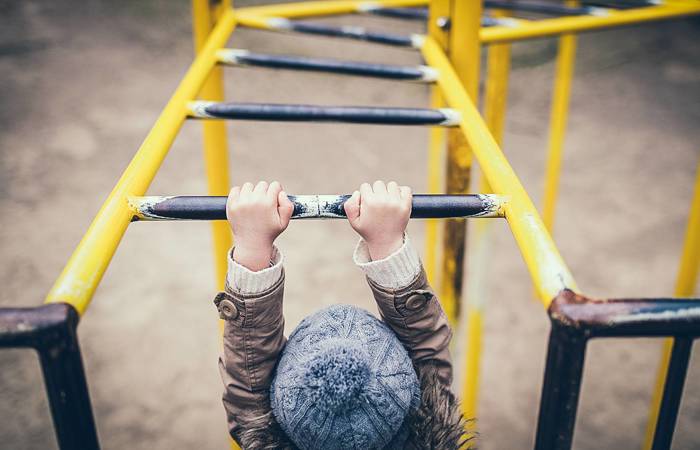Like what you see?
Sign up to receive more free parenting advice.
Thank you for subscribing to our newsletter!
Early Learning

Credit: iStock.com/wundervisuals
Maggie Dent is one of Australia’s most popular parenting authors and educators. In this article she shines a light on our unconscious biases and how they may reinforce gender stereotypes for boys and girls during play.
Over the last 20 years of research and life experience as a mother of four boys, a teacher and a counsellor – coupled with a passion for the importance of childhood, resilience and what helps children thrive – I have learned many things about play and why it matters so much.
Essentially, play contours the way babies and children shape and develop their sense of self, their sense of the world and their sense of where they fit in it.
Quite obviously, children have been playing since time began, however over the last century the play landscape has changed. This is partly thanks to consumerism, the push-down of formalised learning into early childhood which steals valuable play time, the arrival of screens (particularly handheld devices) and much higher rates of both parents working in the Western world.
As play is so critical to children’s identity formation, it’s useful and fascinating for us to explore it through a gender lens.
Given that there is no ‘all boy’ or ‘all girl’ reality, and that gender is more fluid than fixed, for the purposes of this piece, what I am exploring will relate to a statistically significant number of girls and boys.
There are some noticeable and predictable differences in the way most girls and most boys play. However, in the extensive research I did for my book Girlhood, I was unable to find any significant research or science that conclusively demonstrated the reasons behind this.
Assumedly, this means that much of these patterns of play behaviour are shaped through conditioning and expectations, not simply biology.
Certainly, there is some research that shows boys’ higher level of physicality, which is clearly evident in their play and often in their inability to sit still in our early childhood settings, is influenced by the sex hormone testosterone. The same reasoning could be made around girl friendships and play behaviours, in relation to the influence of progesterone and oestrogen.
But that is only part of the story. So, it is certainly time for us to shine a light on some of our unconscious biases which could be unhelpful in reinforcing gender stereotypes for boys and girls in their play experiences.
Remember, boys aren’t tough and girls aren’t weak
The first cultural conditioning that is still evident in early childhood settings, in families, in primary schools and in communities is that ‘boys are tough’ and so the reverse, ‘girls are weaker’.
If a little boy was to fall over accidentally, he would often be urged to get up and keep going. If a little girl fell over in the same way, grown-ups are more likely to speak more gently, use more endearments and offer more help.
When we encourage both our boys and girls, using similar positive, empowering language we can change the way that they shape their expectations about what they are capable of. For example we could say to any child, “Are you okay? Or do you need a grown-up’s help right now?”
When we encourage both our boys and girls, using similar positive, empowering language we can change the way that they shape their expectations about what they are capable of.Maggie Dent
Stay up to date with the latest news and articles from First Five Years
Thank you for subscribing to our newsletter!
All children need to move, stretch and grow
Given that I’m now a grandmother of seven precious grandchildren, I spend a lot of time in playgrounds (and in the bush) observing children’s play.
I have lost count of the number of times that other adults, often men, express concern when my fearless granddaughters climb really high or attempt to do things that these onlookers seemingly consider only boys should be able to do. I have also heard negative comments about the speed at which one of my granddaughters has been quite capably riding her bike, scooter or skateboard.
This is how invisible cultural bias can be, sending unhelpful messages to our girls that can make them believe that they are less brave and less capable, simply because they are female.
It can also impact on their development. We need to keep in mind that even if young girls may tend to have less desire for physicality and movement than young boys, that does not mean they need to move any less than boys. Passivity and lack of movement compromises every child’s growth and development on all levels.
Pretend, cross-gender play is serious business
One of the things that fascinates me watching my granddaughters is how early they were capable of independent imaginative play, often with much talking.
In my house full of boys, I rarely saw my young sons playing imaginatively, especially with extensive verbal dialogue.
Given that there is often a small delay for many boys to develop linguistically, long-lasting, engaged imaginative, symbolic play seems to come more easily and earlier for girls. If a boy has an older sister he may learn to play in this way as well.
In early childhood settings and playgroups there is more opportunity for cross gender play and that has to be good for both boys and girls.
Pretend gunplay, swordplay and superhero play is very commonly seen as boys’ play. There are definitely some archetypal biological drivers that influence the way girls and boys play. For boys, wanting to ‘kill baddies and save goodies’, is linked to the primary roles of early human societies where men needed to protect and defend their communities.
I believe it’s important that there are healthy boundaries around this form of play. If this play is frightening other children, then kids need to know where they can play this game without scaring others.
It is also important to encourage girls to play these games, not just limiting them to boys. Given that we now have women fighting in our defence forces, working as firefighters and flying rescue helicopters, we need to ensure that we encourage cross-gender play. This is equally as important for little boys who want to play nurses, or teachers or to play in the home corner or perhaps to be the ones running the junior day spa.
An interesting US research experiment into the differences in boys’ and girls’ play was replicated on the ABC TV program Catalyst, in a 2011 episode called Mean Girls. The experiments, supervised by a developmental psychologist from the University of Sydney, showed two different scenarios.
In the first scenario, three boys were sent to play with a large castle in the centre of the room. Quite quickly the boys sat in front of the castle, started playing with it and imagining it was a zoo. When the girls went in to the same scenario, they sat in front of the castle and began talking and planning. And they kept talking and planning for around 18 minutes until they finally worked out the rules to the game they were going to play. This fundamental need for girls to set out structure and rules is common. Indeed many little brothers have found this incredibly frustrating when they play with their sister. They just want to play, and their sister just wants to talk about how to play and it can end up with no play at all!
In the second scenario, something quite different happened. The researchers placed a large, very desirable stuffed toy in the middle of the room. When the three boys went in, one boy picked up the stuffed toy, another tugged it out of his hands and then the third boy tugged it out of his hands. Then they threw the toy away and began a game that had nothing to do with the toy.
When the three girls went in to play with the stuffed toy, one of the girls picked it up and immediately, the other two girls turned their backs on the first girl and sat down and began playing their own game, completely ignoring the girl with the toy. The researcher observed that the girls’ use of ostracism to get what they wanted may have also been due to some evolutionary and biological explanations about power and resources. Interesting!
These tendencies highlight the importance, again, of cross-gender play and that includes resisting the urge to choose toys for your child based on gender… mix it up and give them an opportunity to try different things.
While play may seem to be the fun and easy part of being a child, it is beyond important in the shaping of our sense of identity, in building healthy bodies, and for creating wonderful opportunities for building human connectedness and healthy brain integration.
Play, in all its forms, can give our young girls and our young boys wonderful ways of exploring the endless possibilities of becoming a unique human, rather than just being limited by old paradigms and boxes, of how to be a boy and a girl.








